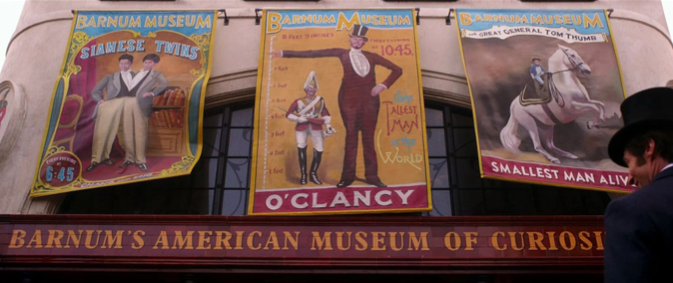
By Morgan Berk
The surprising success of Hugh Jackman’s performance in “The Greatest Showman” has brought the name Phineas Taylor Barnum back into the forefront of people’s minds. This seems like the perfect time to reflect on Barnum’s unique publicity methods and how they paved the way for some of the public relations methods we still use today.
America’s Greatest Showman was not a perfect man by any means, but his impact on the age of publicity and press agentry has left a lasting mark on public relations and advertising. A lot can be learned from Barnum and his illustrious career.
Today we know that many of the advertising and publicity tactics used by the self-proclaimed “Prince of Humbugs” were unethical at best. However, while still acknowledging Barnum’s role in the exploitation of marginalized people, it is also important to remember the good and useful things that are part of his legacy.
Advertising existed long before Barnum’s time, but he managed to usher in an era of publicity that took advertising to a whole new level. The following are four advertising or promotion methods we still see today that were brought into the spotlight by P.T. Barnum more than a century ago:
- The Pseudo-Event
Pseudo-events, also known as media events, are well planned events orchestrated for the purpose of generating publicity and media attention. These events didn’t earn their name until the term was coined by Daniel Boorstin in 1961. They existed long before P.T. Barnum, but he brought them into prominence with his loud and unapologetic brand of publicity. The “freak shows” that Barnum was most known for are a prime example of pseudo-events, as they existed for no other purpose than to draw in a crowd and stir controversy on the streets and in the newspapers.Today we see a variety of pseudo-events, ranging from press conferences, to award shows and reality TV, all events that exist purely to create news. - Museum Advertising
To promote his American Museum, Barnum displayed oversized banners on the side of the building to announce new attractions in the museum. This is a tactic that we still see today at major museums such as the Smithsonian.
Image source: dailymotion.com 
Image source: americaninno.com - Concert Promotion
Lesser known than his circus expertise is Barnum’s foray into the arts. In August 1850, he brought the “Swedish Nightingale” to the United States. The opera singer Jenny Lind was wildly successful in Europe, but virtually unknown in America at that time. Without even hearing her sing, Barnum invited Lind to perform on a tour across America and proceeded to generate incredible amounts of hype surrounding her arrival. Thirty thousand people were there to greet her as she arrived in New York Harbor and her tour went on to net more than a half-million dollars, impressive numbers for 1850. Much of Lind’s success should be attributed to her talent and personality, but credit for the excitement generated before her arrival can be given to Barnum, who began publicizing the tour more than six months in advance.
Image source: smithsonianmag.com Live music continues to thrive in today’s society, with fans flocking to their favorite musicians’ tours in the thousands. Tickets to see major artists, including Adele, Elton John, Beyonce and Taylor Swift, sell out in mere seconds thanks to the skill of those who promote the tours, many of whom use some of the same tactics that Barnum used to make Jenny Lind a global sensation.
- Vehicle Advertising
The first actual vehicle wrap advertisement was most likely created for Pepsi Co. in 1993 to promote its Crystal Pepsi product. However, advertising on the sides of vehicles is an idea that originated in the age of P.T. Barnum. Barnum would send horse-drawn wagons through New York City that were plastered with posters and signs advertising his American Museum. Walk or drive around today, and you’re likely going to see countless buses, 18-wheelers and other commercial vehicles plastered with various advertisements.
Image source: flickr.com
When looking back at and discussing historical figures, it is important to remember that people are neither entirely good or bad, or entirely ethical or unethical. Both may exist in the same individual, and neither should be erased. So when the topic of P.T. Barnum next comes up, his shortcomings should indeed be addressed in full measure, but his many contributions to public relations and advertising should be remembered as well. Barnum’s life has left a lasting mark on public relations and advertising, one that is certain to endure much further into the future.
Do you have any thoughts on P.T. Barnum, “The Greatest Showman,” or his influence? Let us know in the comments below, and check us out on Facebook and Twitter.


Leave a comment